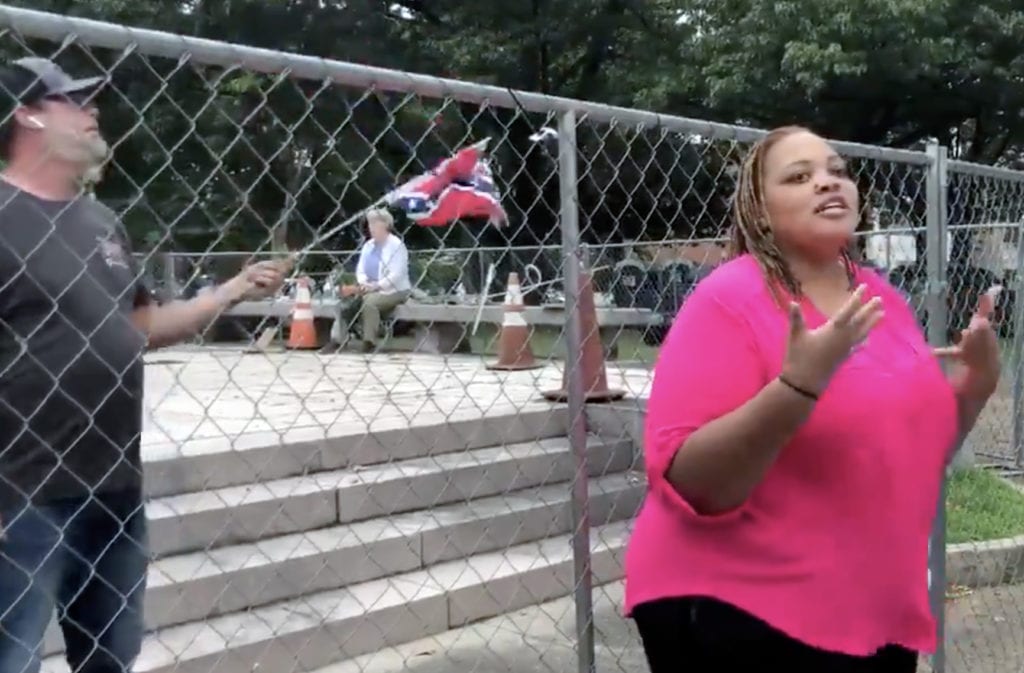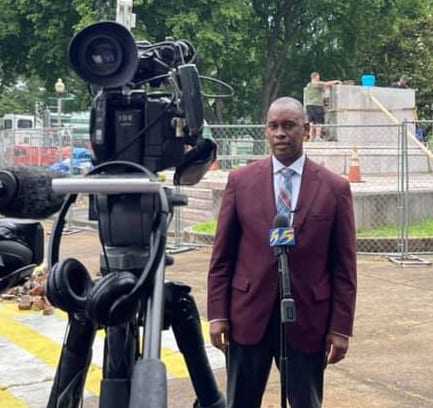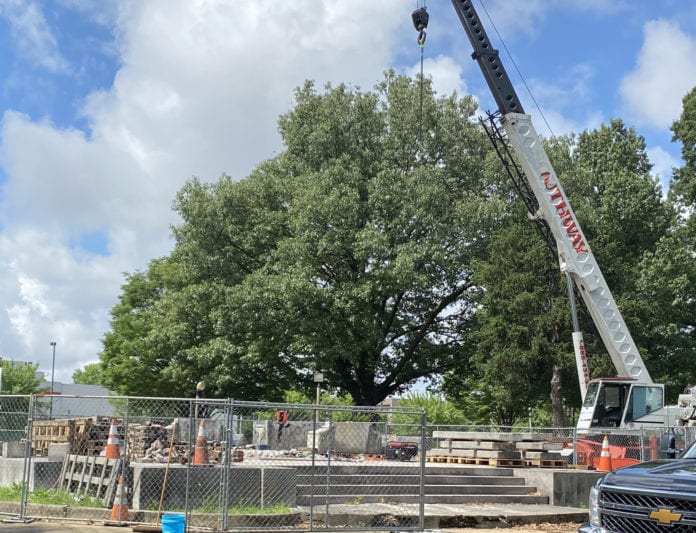Three-plus years after an equestrian monument to Confederate Gen. Nathan Bedford Forrest was removed from Health Sciences Park in the Medical District, work has begun to relocate the remains of Forrest and his wife.
The relocation work began Tuesday and – like the removal of the statue – it flamed a pushback.
As Tami Sawyer, who led the community charge for removing Forrest’s statue, spoke with reporters on the site Tuesday, a lone protester – a volunteer on the excavation crew – threatened the now-Shelby County Commissioner and hurled expletives her way.

Sawyer, who became synonymous with the 2017 “Take ‘Em Down 901” effort to have multiple Confederate-era statues removed, continued speaking as the man shouted out lyrics to “Dixie,” the de facto anthem of the Confederacy.
“We are not post-racial America,” said Sawyer. “We are not post-racial Memphis. This hatred and this racism is large and loud.”
Later on social media, Sawyer posted about the effect the confrontation had on her.
“Hard day,” she wrote. “I won’t lie and say I feel great, but stronger women than me survived this racist game, and so can I.”
Forrest’s equestrian statue, which stood over the grave of the Confederate general and his wife, and the monument of Jefferson Davis, the Confederate president, were taken down under the cover of night on Dec. 20, 2017.
The former Ku Klux Klan leader and his wife will be reburied at the National Confederate Museum at Elm Springs, where the statue also has been relocated. The site is in Columbia, Tennessee.
The remains of Forrest, who was also an ardent slave trader, had been entombed in the park for more than a century. The administration of Mayor Jim Strickland used a loophole in the historical preservation law to sell the public parks housing the confederate-era statues to Greenspace, a private nonprofit.

Attorney Van Turner Jr., president of Greenspace Inc., applied context to the removal of the Forrest’s remains on Tuesday.
“As we have just commemorated the tragedy in Tulsa 100 years ago and acknowledged the fact that we as a people have endured so much, I am so thankful for fresh starts and new beginnings,” said Turner, also a Shelby County Commissioner and president of the Memphis Branch NAACP.
“We now begin the final stretch of this journey and so thankful for the end in sight.”
The removal process will take weeks.
In three weeks, the same park will host this year’s Juneteenth Festival, which is a celebration associated with the emancipation of slaves. The celebration will go on as planned June 18-19.
According to Lee Millar, a Sons of Confederate Veterans spokesperson, Forrest descendants felt the remains should be removed and buried in a place where “he can be respected, protected, and visited without danger…”
Legal wrangling had ensued since the statue was removed from its pedestal three years ago. Turner was satisfied with the outcome.
“And so we’re out here working together to get this job done,” said Turner. “And I think it sends a message that we’re much stronger when we work together and we unite for one common task.”
Millar said the volunteer who shouted at Sawyer would not be back as part of the removal. Sawyer filed a police report on the incident.
Forrest’s legacy includes being the first elected Grand Wizard of the Ku Klux Klan. Prior to the war, he was a wealthy cotton baron, who ran a highly profitable slave trading business.
History appends Forrest to the massacre at Fort Pillow, where hundreds of African-American Union soldiers were shot down, although they were trying to surrender.
As leader of the KKK, Forrest helped suppress voting rights of African Americans in the South through violence and intimidation.
In his final years, Forrest insisted he had never been a KKK member and made a public speech encouraging racial harmony.



